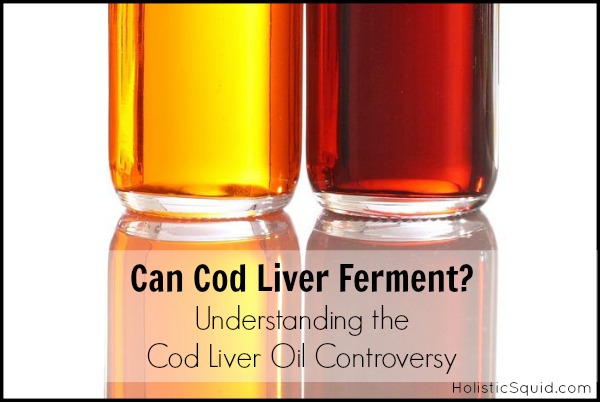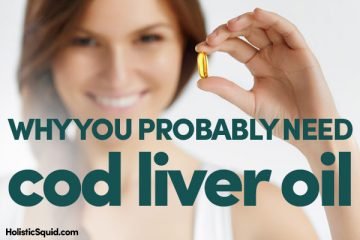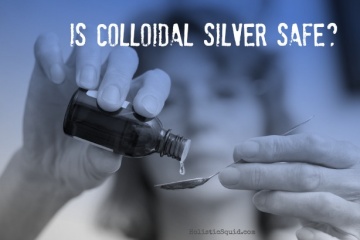
We've been talking quite a bit about the health benefits of cod liver oil, and lately I've been getting tons of questions about the recent cod liver oil controversy. I tend to feel that the answer to just about everything comes from asking, “What feels best in YOUR body?” For those who also want to know the facts, today Naomi is taking us deep into the science of cod liver oil and what you need to know. ~Emily
Cod liver oil has long been touted for its healing and health promoting properties. Methods of extracting the oil from the livers have changed over the centuries. And each method has its proponents claiming that one particular method is superior to the others.
A background to the controversy
In 2007, a farm in Nebraska called Green Pastures started manufacturing what is called fermented cod liver oil (FCLO), claiming that they were the only company to use a traditional and natural method of extracting the oil from cod livers.
In 2014, a company called Corganic started selling extra virgin cod liver oil (EVCLO) that was manufactured by Rosita in Norway after a number of years of development, claiming that their method of extraction was even more ancient and rare, and that it preserved the freshness of the cod liver oil.
In August of 2015, Dr. Kaayla Daniel published an article, Hook, Line and Stinker, with lab test results over concerns about FCLO that garnered much attention.
So which cod liver oil is actually better, FCLO or EVCLO? There are three main issues, and a number of smaller ones, including the questions of whether cod livers can ferment in the first place, rancidity, and vitamin levels.
One product, one company
One of the first problems clouding the controversy of naturally produced cod liver oil is that, at the time of writing, there is only one company manufacturing FCLO, one company manufacturing EVCLO, and one company making virgin cod liver oil (VCLO).
When Dave Wetzel started promoting FCLO, he was quite clear that he considered other methods of modern extraction inferior – the thing is, there are many companies using those methods and no one company is targeted. Corganic began doing the same thing, promoting EVCLO by stating why other processes, including fermentation, were inferior, and was accused of slander. While not including another company's name in materials doesn't target them by name, it is obvious who the other company is because there is only one company doing that process.
But if the leaflet Corganic handed out on the history of cod liver oil is slander, Green Pastures did the same. Stating,
Cod liver oil extracted via a putrefactive fermentation process decreased in vitamin potency as decomposition progressed.
Even before EVCLO was on the market (although samples had been available), Green Pastures published material that an ‘unnamed' virgin cod liver oil performed worse in a biofeedback comparison, as well as referring to questions about new virgin CLO in their FAQ, stating that the term virgin CLO was simply a marketing tactic and that it utilizes heat in processing. There is one company that sells VCLO (Nutrapro International) and one company that makes EVCLO (Rosita/Corganic), both of which say they do not use heat; Wetzel therefore accuses them of lying about their process.
Sometimes promoting what is good about your product means that you need to point out the problems in others. If Wetzel hadn't written about the problems with commercial manufacturing processes, I never would have questioned it. Likewise, if Welch hadn't written about issues with FCLO, I would have simply trusted the endorsement of the WAPF organization.
I didn't find the tone of Dr. Daniel's report conducive to dialogue. Nor do I believe that she had any ulterior motives, as passions can run high even in those with a personal interest in health, food, and nutrition.
Historical processing of cod liver oil
Both proponents of FCLO and EVCLO call on history and tradition as the source of their oil extraction methods. There is no question that at one time, Norwegian fishermen salted cod livers in a barrel and drew off the oil. Sally Fallon Morell of WAPF has an overview of the history of cod liver oil processing, from traditional to newer modern methods, Cod Liver Oil and Our Changing Food Paradigms. There were three types of traditional cod liver oil, pale, light brown and dark brown, depending on how far along the fermentation was, and she argues that the light brown oil was valued the most for its healing properties.
Archie Welch, co-founder of Corganic, agrees that salted cod livers sat in a barrel but maintains that the process underwent putrification rather than fermentation and that the brown oil was used for external or industrial purposes. He presents that there is a fourth type of oil, one that predates the fermentation method, extracted without heat, pressure, or putrification/fermentation. He also cites a journal from 1924/5 that claims that FCLO looses vitamin potency in comparison to freshly rendered oil, in his take on cod liver oil history.
Can cod liver ferment?
The first thing to clarify is that the oil itself is not fermented, but that fermentation is used to break down the cod livers to release the oil, which is then skimmed off.
Think dry aged meat. Sausage. Or fish sauce. Fermented cod liver is an adjective for oil, so that it is “fermented cod liver” oil, not fermented “cod liver oil”.
The process Green Pastures uses to make FCLO has been described as follows: frozen livers are brought in and placed in vats almost 10,000 gallons in size. Salt and a starter culture are used, but no sugar or other carbohydrates are. The vats are sealed and left for up to six months. During that time, the livers and sediments settle to the bottom, water is released and forms a layer above that, and oil floats to the top. (source)
Different kinds of fermentation
When we think of the word “fermentation,” we tend to think of probiotics, sauerkraut or yogurt, and various beneficial effects of eating fermented foods.
There are, however, a number of different kinds of fermentation with different processes and different end results, such as alcohol or meat preservation.
The fermentation most health foodies are familiar with is that of lacto-fermentation. For example, in making sauerkraut, the added salt suppresses the action of spoilage bacteria while drawing out water from the cabbage, giving a chance for preserving bacteria to flourish by “eating” carbohydrates, which decreases the pH (making it more acidic) and creating an environment in which spoilage bacteria cannot live.
Although in some places Wetzel describes the process as lacto-fermentation (here in 2009), later on he seems to start using the words enzymatic fermentation (here in 2013) and not lacto-fermentation. If lactic-acid forming bacteria are introduced in the starter, there would be some food for them, as there is somewhere between 1-2g of glycogen (carbohydrate) per 100g of liver. It is not that much, however, keeping in mind that the livers are in a vat for up to six months, and when fermenting bacteria run out of food, they die off.
Value of pH levels
The main way lactic-acid forming bacteria protect food from spoilage is by lowering the pH to 4.6 or less, an environment in which spoilage bacteria cannot live.
Dr. Daniel found that the acidity of the oil corresponds to a pH value of between 5.17-5.80. Dr. Jacob Friest argues that acidic components would be lost during the pulling and centrifugation of the oil; Green Pastures had the aqueous solution in the vats tested (results here), which found that the water-brine tested at a pH of between 4.80-5.04, more acidic than the oil but not yet 4.6. Dr. Friest assumes that if the pH of the livers drops, as it does, then it is all due to the action of lactic-acid bacteria, but even spoilage-causing bacteria can lower the pH somewhat.
Dr. Friest compares the relatively high pH of the liver brine to some raw fermented sausages that have a high pH, but this is an incompatible comparison. There are two ways of making fermented sausages – to add a bacterial starter culture with a carbohydrate (dextrose or sugar) which quickly drops the acidity of the meat below 4.6 thereby rendering it safe, or to air dry the meat so that there is not enough moisture to allow spoilage (source). While the pH of the air-dried fermented sausage is higher than 4.6, we can all agree that livers sealed in a vat below a layer of water does not meet the criteria of low moisture.
There are some traditional methods of fermenting meat or fish by burying it. As far as I know, there are currently no studies testing pH levels or active microbes. Any deviation from traditional methods tends to result in sickness or even death. While fermented meat and fish as made in the north of North America has started to be examined by researchers, still very little is understood and even less is found published.
While the process of making FCLO does include a starter culture, which could include friendly bacteria, it does not include any carbohydrate and so the bacteria would not be able to quickly lower the pH, as the glycogen would only become available slowly as the liver broke down.
Enzyme fermentation?
Wetzel, most recently, refers to the process of breaking down the livers as “enzymatic and bacterial digestion.”
Enzymes are, for the most part, proteins that facilitate chemical reactions. In the case of food, this means breaking down food molecules. Different kinds of enzymes break down different materials, including carbohydrates (amylase), fats (lipase), and proteins (protease).
Many traditional fish sauces contain the whole fish cut up or even just fish entrails, as the guts are where digestive enzymes, particularly proteases, naturally occur and would help break down the fish flesh. One difference with many fish sauces compared to FCLO, however, is that it is the draining water-based liquid that is collected, not the floating oil-based liquids.
However, the process of putrification also involves enzymes breaking down the food material. The ancients themselves disagreed whether garam, an old type of fish sauce, was a choice liquor or salted putrification (source).
What is the difference between fish putrifying and fermenting? Well, maybe not as much as we would think.
Autolysis, “more commonly known as self-digestion, refers to the destruction of a cell through the action of its own enzymes.” Basically, this is rot – the breakdown of a food material. If you left a fish out in the open, the enzymes present in the fish would start to decompose it. Bacteria are then able to enter the flesh, proteins denature, the pH decreases, fats are oxidized and undergo hydrolysis, among other events. (source)
Let's take the above example of sauerkraut. If you take a chunk of cabbage and leave it out, spoilage bacteria and enzymes break down the cabbage material (autolysis) and you end up with a rotten cabbage.
By adding salt and lowering the pH, you inhibit the action of the spoilage bacteria and instead have the flourishing of friendly bacteria feeding off the carbohydrates but without the enzymes devouring itself, if you will. By doing so we've created something different than rotting cabbage.
With meat and fish, however, it's a little different. Adding salt does initially suppress the action of spoilage bacteria but enzymes continue to break down the flesh. Indeed, that is how more oil is obtained from the cod livers – as the cells are destroyed they release more oil (and water, which is why there are layers as described in the process above). In fermenting cod livers, autolysis isn't stopped, it's more like controlled, given the right environment so that harmful bacteria don't thrive as well.
Is this putrification or fermentation? I suppose it depends on how you look at it. At any rate, FCLO has never been detected to contain any pathogenic bacteria, which is what we often associate with putrification. On the other hand, it does not contain many of the benefits that we often associate with fermentation, like probiotics.
Amines
In food, biogenic amines are the building blocks for amino acids, which in turn are the building blocks of protein. As the livers break down, enzymes turn protein into biogenic amines. Biogenic amines are not bad in themselves. Indeed, many of them are necessary neurotransmitters, but an excess of absorbing them can lead to problems.
Biogenic amines are found in many foods, especially aged and fermented foods, and most people break them down with another enzyme, monoamine oxidase (MAO), so that they are not absorbed. Some people, however, have a deficiency in that enzyme (or are on MAO inhibiting medication) so that they absorb too much and this can cause a variety of symptoms, depending on the amine.
The crude material in the vats certainly contains biogenic amines but they are largely filtered out. Green Pastures posted that biogenic amines are at low levels in the oil, although tyromine can fluctuate from 5-50 ppm (source). In Dr. Daniel's report, two of the three samples had low to moderate levels of amines, while a third sample had higher levels, particularly of tyromine (177 ppm).
For most people, the amount of amines should not be a problem, although those low in MAO and sensitive to tyromine may have reactions, such as headaches, hypertension, and nausea or vomiting. (source)
To be continued…
Stay tuned for the second part of evaluating the cod liver oil controversy, where the topic of rancidity, trans fat, vitamin levels, and fish species will be addressed, as well as my own personal experience using both brands of cod liver oil.
The closest Naomi has gotten to her dream farm is growing live bacteria in jars and wrangling her four children, including twins. A Canadian who now lives in Slovakia, Naomi writes about traditions, food, and life in Slovakia (as well as some pretty strange food) at Almost Bananas.











Thanks for posting this very well-written article. As a consumer of FCLO for a few years, I was a little upset by how everyone started to immediately shun it once the report came out. I’m still not sure how I feel about it, but I haven’t taken FCLO since then. I’m definitely interested in reading more about this as new information comes to light!
Also, totally love that you’re also a twin mom 🙂
It’s definitely a confusing topic! I’m glad you liked it.
Twin moms unite! 🙂
Thank you so much for doing/sharing all of this research! I, too, have used both brands (happily). I look forward to Part II!
I’m glad you found it useful, thank you!
Thank you for writing this article and looking forward to reading Part 2. I have both been a user of FCLO and EVCLO and I have to say I prefer the EVCLO because it taste better. Both brands are expensive so I am hoping that including EVCLO into my diet is making a difference and not some snake oil pseudo claim.
It’s now been three months since you mentioned doing a follow-up article in order to actually finish this subject. So far, nothing. Are you going to do another article or not?
What is happening with part 2? Will there actually be a part 2?
What do I do if I am one of those people who get headaches from taking cod liver?
The WAPF actually did their own testing last year, which confirmed Dr. Daniel’s testing. Here’s the latest info:
http://www.thefamilythathealstogether.com/weston-price-foundation-vindicated-kaayla-daniel-fermented-cod-liver-oil-controversy/
Did part two get lost somewhere? I can’t seem to find it. 🙁